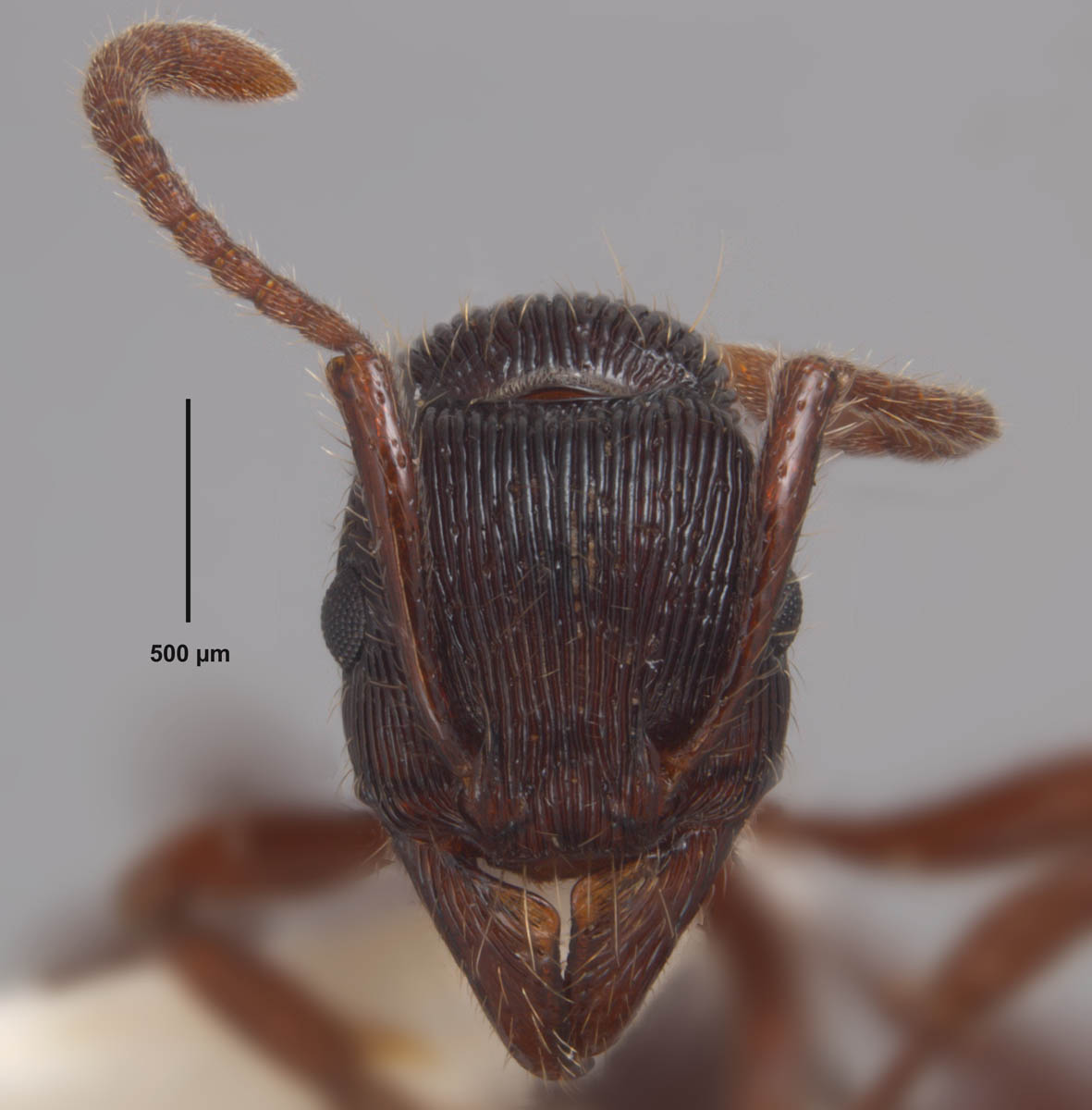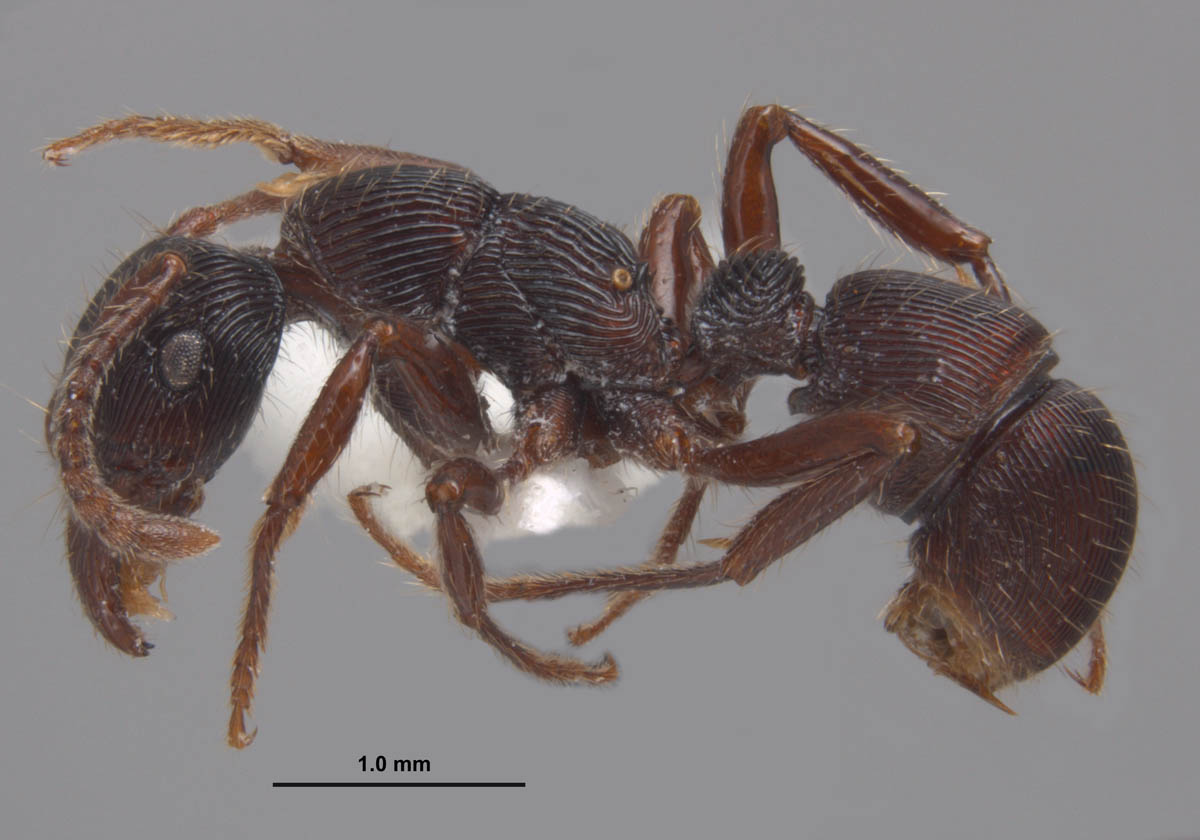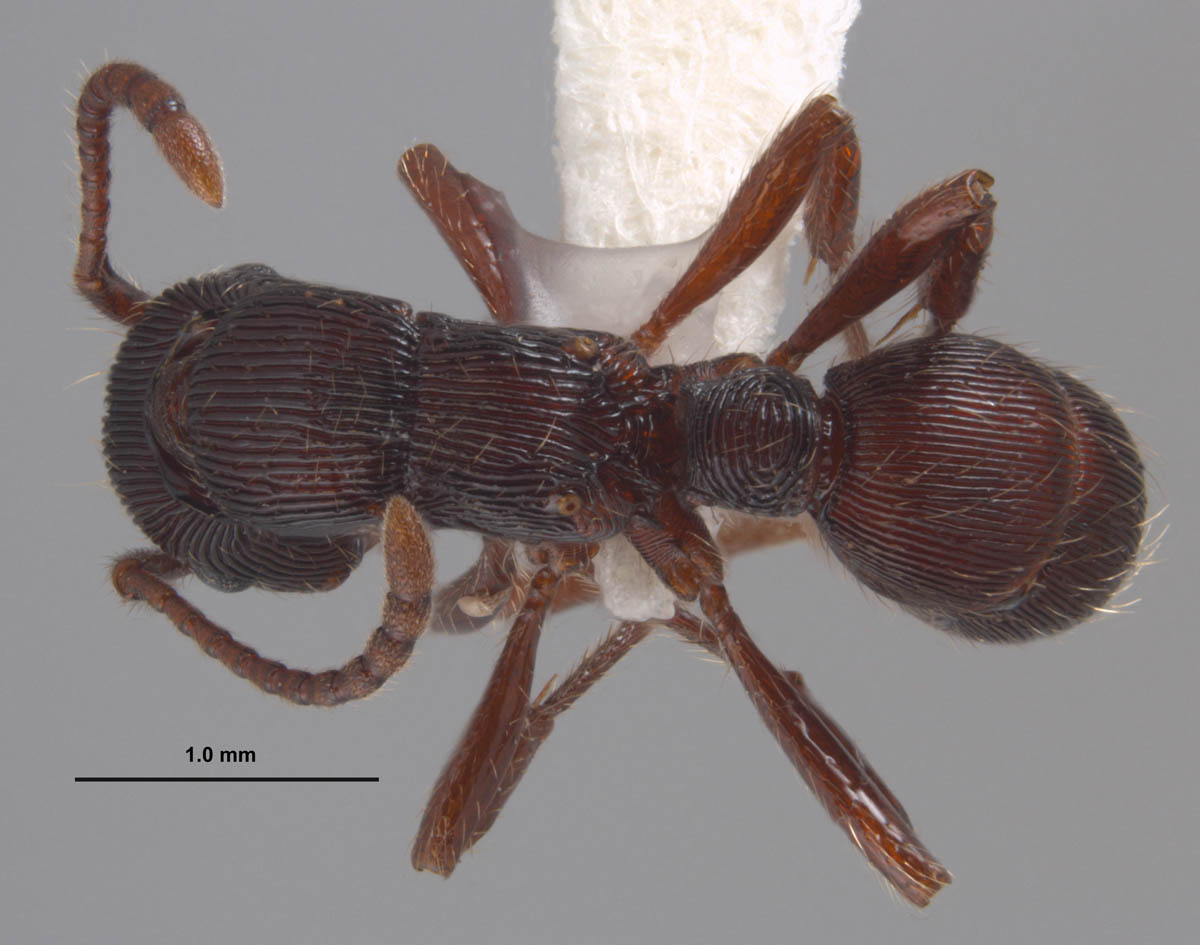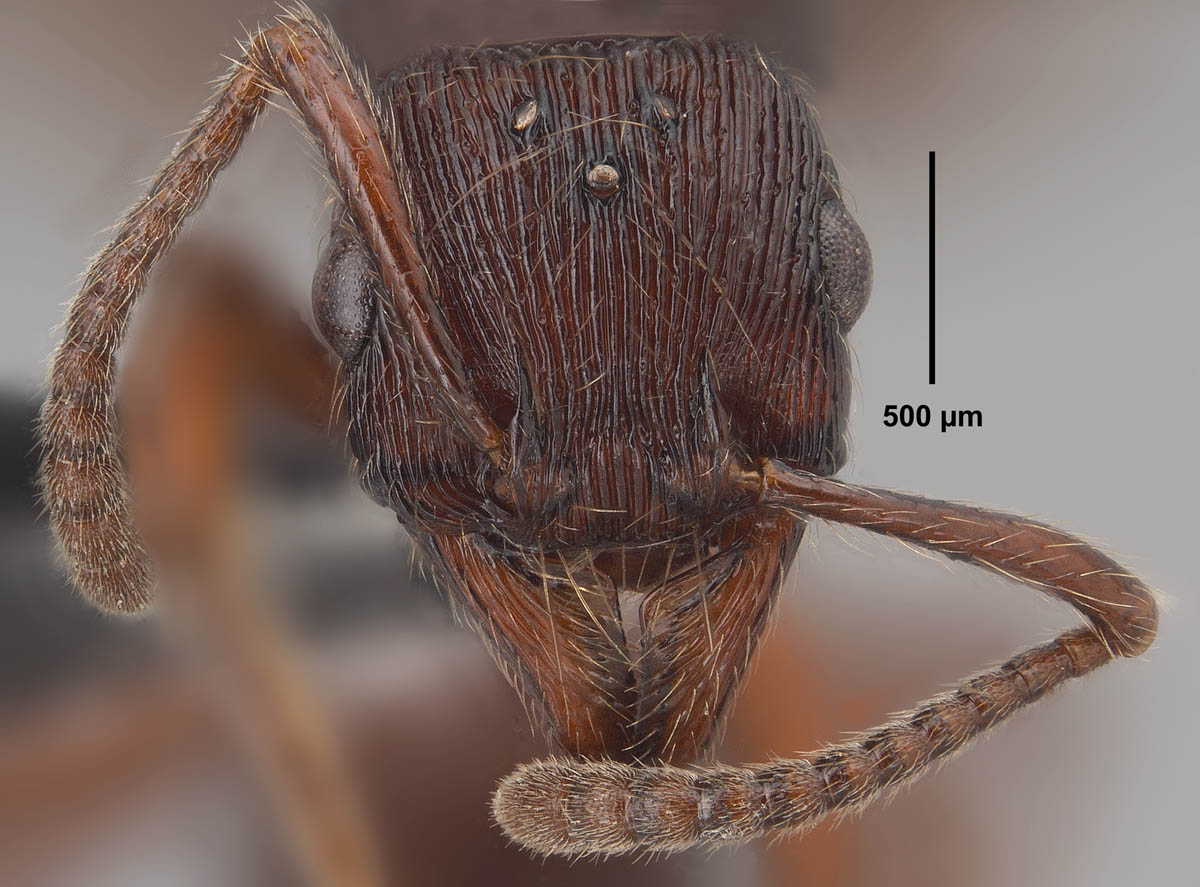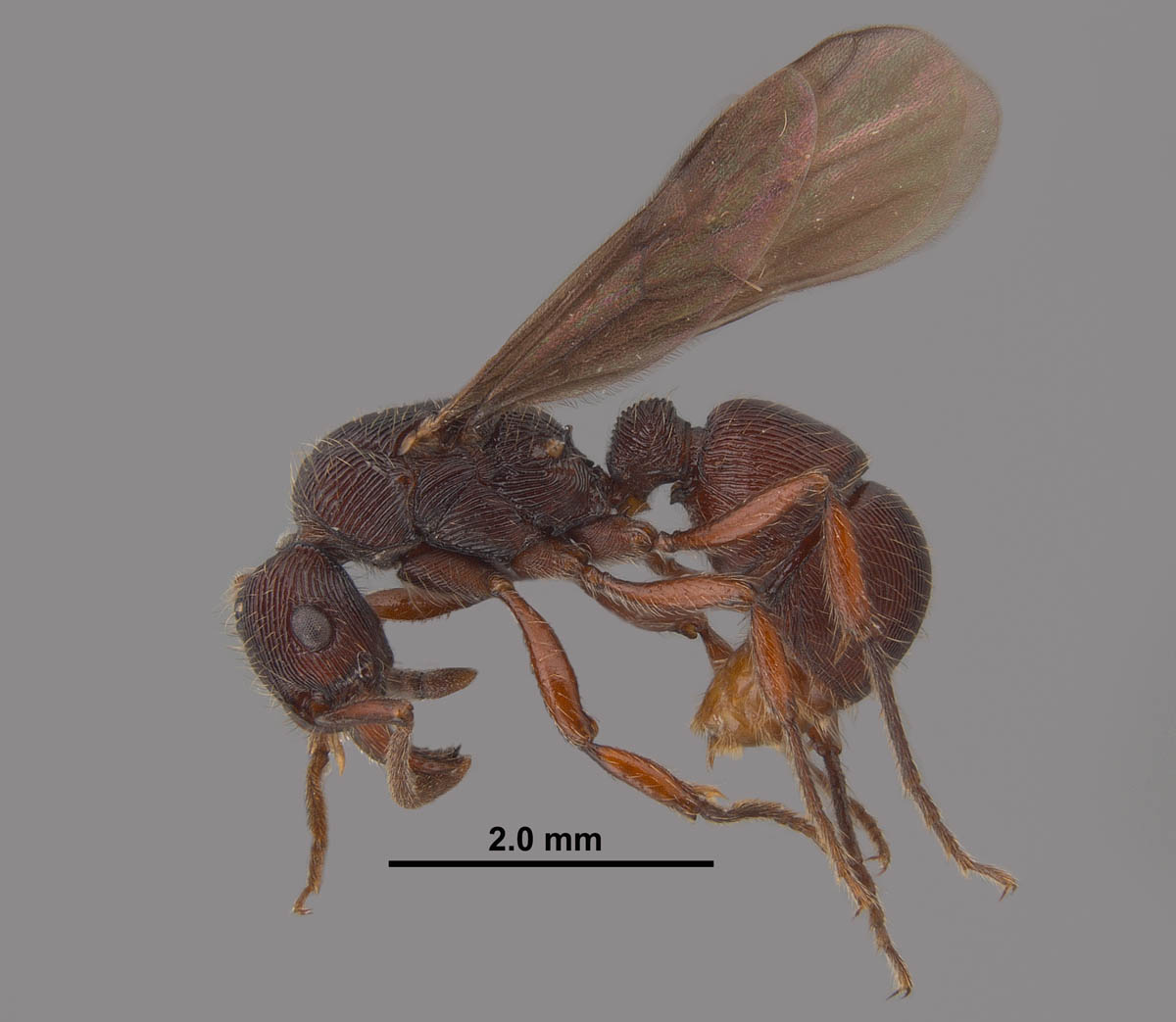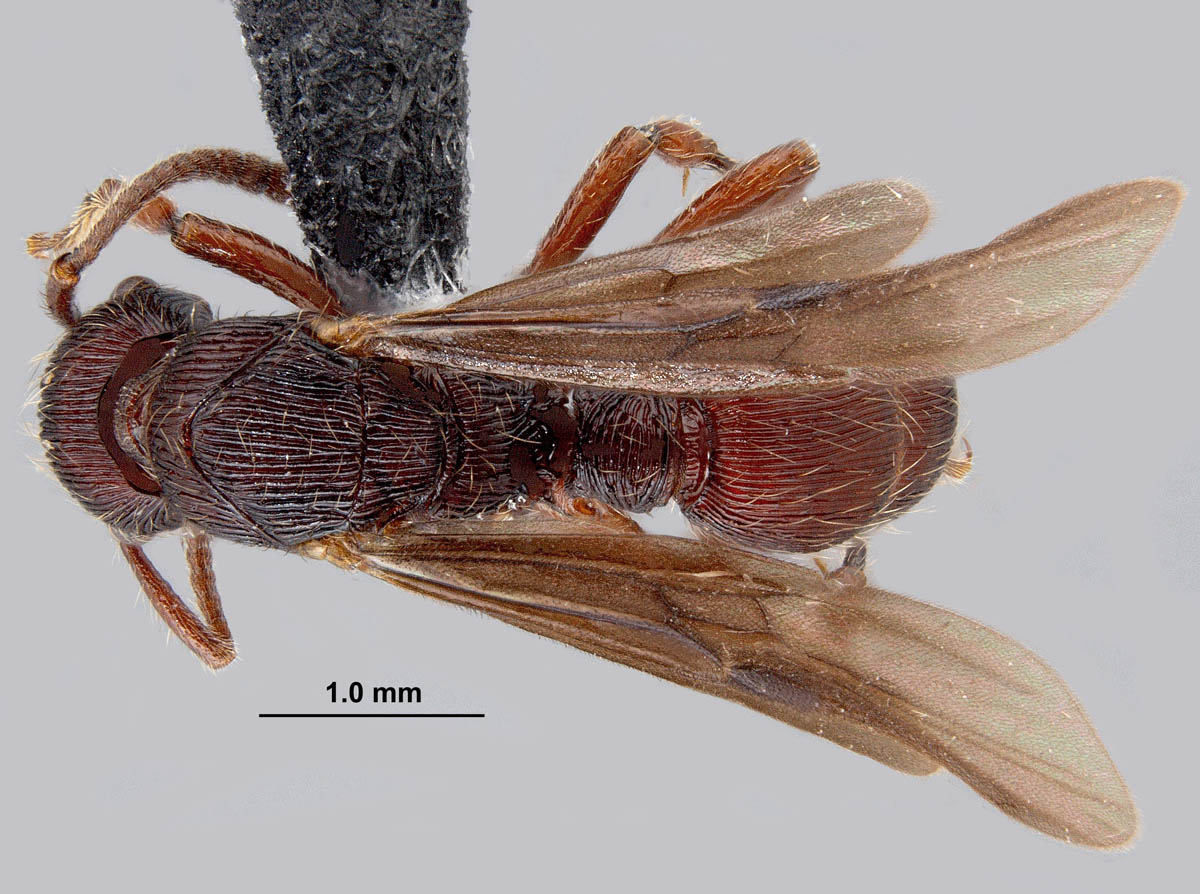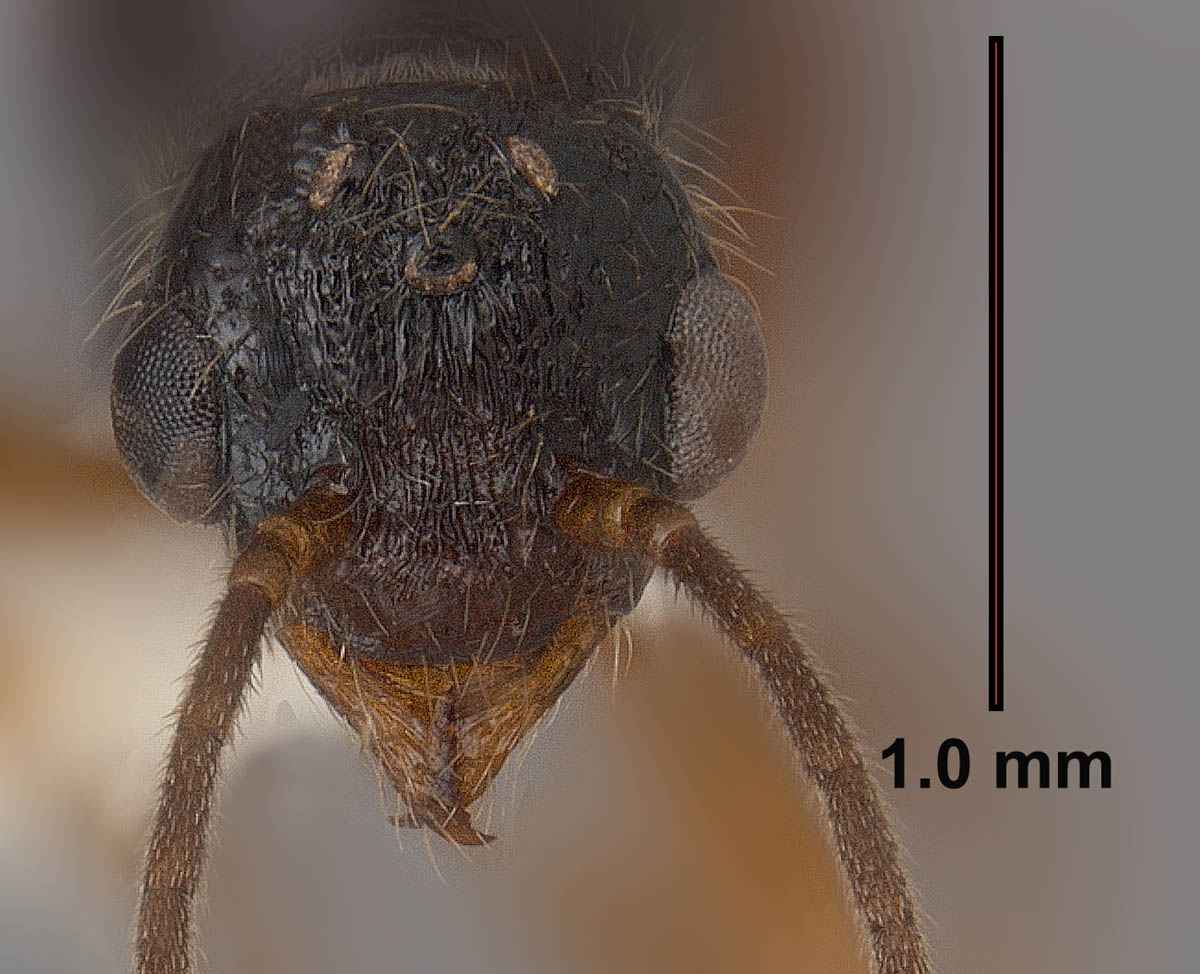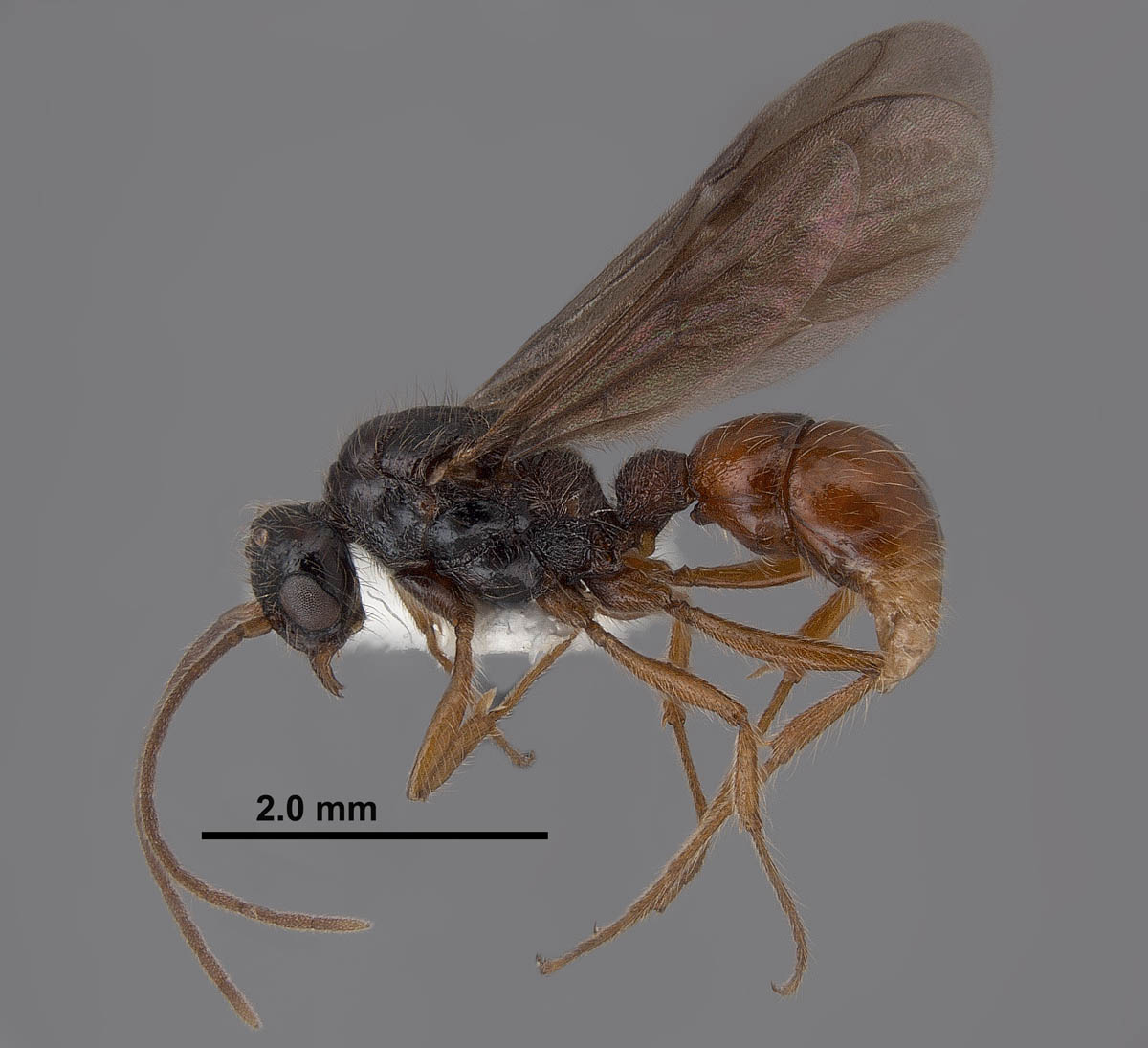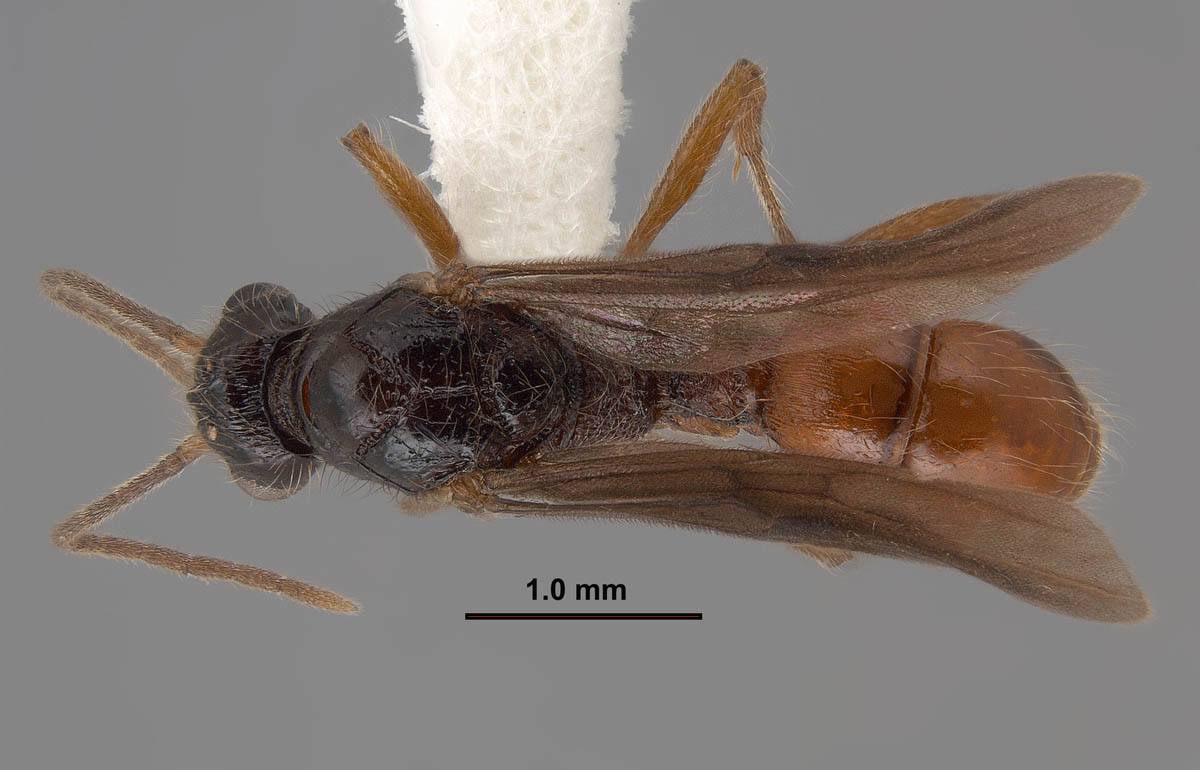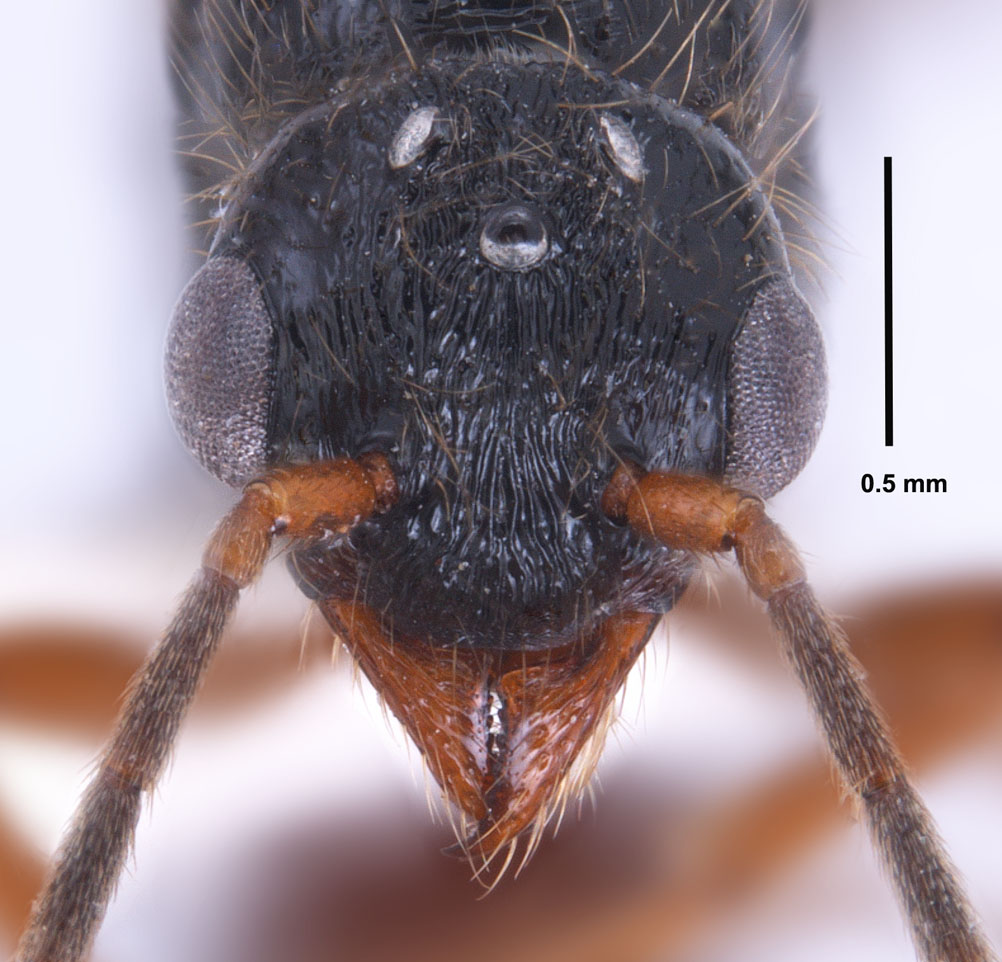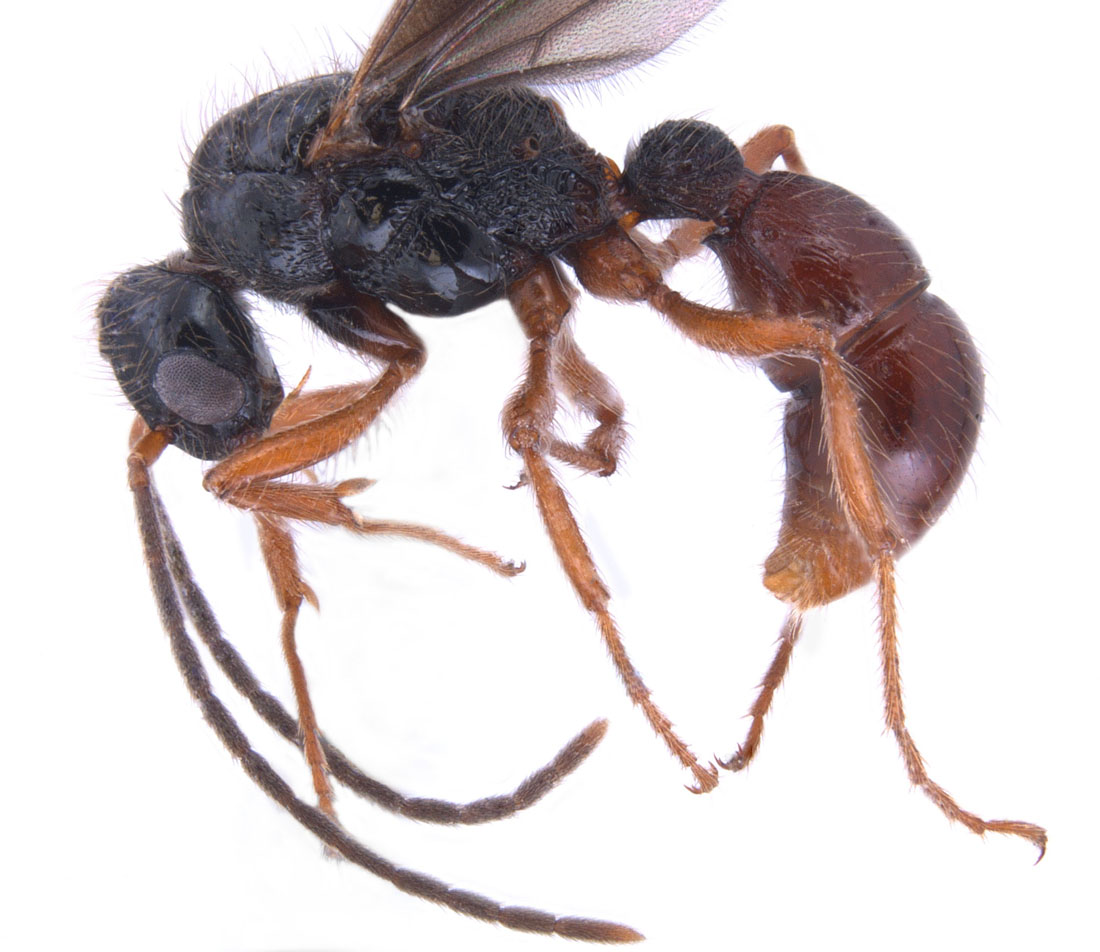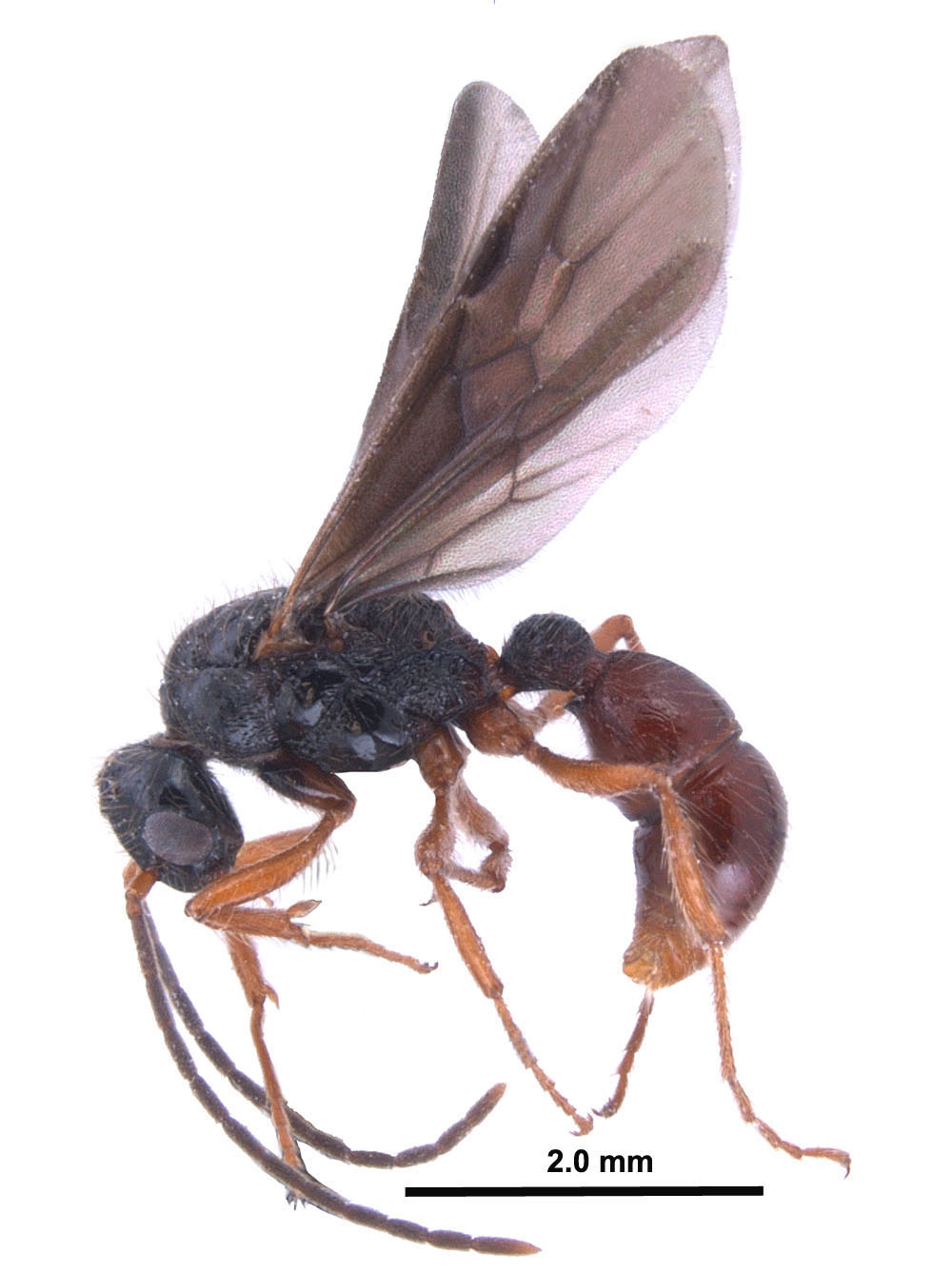Subfamily ECTATOMMINAE South American grooved ant Authors: Joe A. MacGown and Ryan J. Whitehouse |
||
Gnamptogenys triangularis, full face view of a worker (MS, Harrison Co.) (photo by Joe A. MacGown) |
Gnamptogenys triangularis, lateral view of a worker (MS, Harrison Co.) (photo by Joe A. MacGown) |
Gnamptogenys triangularis, dorsal view of a worker (MS, Harrison Co.) (photo by Joe A. MacGown) |
Gnamptogenys triangularis, full face view of a queen (MS, Pearl River Co.) (photo by Ryan Whitehouse and Joe A. MacGown) |
Gnamptogenys triangularis, lateral view of a queen (MS, Pearl Rive Co.) (photo by Ryan Whitehouse and Joe A. MacGown) |
Gnamptogenys triangularis, dorsal view of a queen (MS, Pearl Rive Co.) (photo by Ryan Whitehouse and Joe A. MacGown) |
Gnamptogenys triangularis, full face view of a male (MS, Pearl River Co.) (photo by Ryan Whitehouse and Joe A. MacGown) |
Gnamptogenys triangularis, lateral view of a male (MS, Pearl Rive Co.) (photo by Ryan Whitehouse and Joe A. MacGown) |
Gnamptogenys triangularis, dorsal view of a male (MS, Pearl Rive Co.) (photo by Ryan Whitehouse and Joe A. MacGown) |
Gnamptogenys triangularis, full face view of a male (photo by Joe A. MacGown) |
Gnamptogenys triangularis, lateral view of a male (photo by Joe A. MacGown) |
Gnamptogenys triangularis, lateral view of a male (photo by Joe A. MacGown) |
Introduction Gnamptogenys triangularis (Mayr) (Ectatomminae), the South American grooved ant, is an average sized, dark brown species with deep grooved sculpture on the entire body. The species was first reported in the US in in Florida was collected in 1985 (Deyrup et al. 2000), and is now becoming common in southern Alabama and Mississippi where it was first reported in 2002 (MacGown and Wetterer). Taxonomic History (Bolton 2016) Diagnosis Identification Queen: Medium sized : TL ≈ 6.0mm, HL 1.18-1.24mm, HW 1.18-1.22mm, SL 1.06-1.13mm, EL 0.31-0.32mm, MeSL 1.86-2.01mm (n=5) (MEM specimens). Dark reddish-brown head, mesosoma, and gaster with lighter reddish brown legs and antennae. Head, mesosoma and gaster shiny, with distinct, longitudinal grooves. Head about as long as wide, squarish; with conspicuous, erect setae; eyes situated laterally at about the midpoint of the head; three ocelli present; mandibles elongate, triangular, edentate, with minute dentition; distinct frontal lobes present; antennae 12-segmented, scape barely exceeding posterior border of head. Mesosoma with erect setae; enlarged with four wings or wing scars present; metacoxal spine distinct, but not always as well developed as in the workers; propodeal spines minute. Wings grayish brown fading to clear along lower wing margins; forewing with costal, basal, subbasal, submarginal, and discal cells presesnt, pterostigma present; hindwing with costal, basal, subbasal, and one submarginal cell present. Waist with a single petiolar node, with distinct, shining ridges; anteriorly directed subpetiolar process present ventrally. Gaster with numerous erect setae; first two segments elongated to make up most of the gaster; distinct, deep suture between the first two segments; first gastral sternite with anteroventral anterior projection; sting present. Male: Medium sized, slightly smaller than workers: TL ≈ 5.0mm, HL 0.97-1.01mm, HW 0.91-0.98mm, SL 0.23-0.27mm, EL 0.42-0.46mm, MeSL 1.84-1.93mm (n=5) (MEM specimens). Head and mesosoma dark brownish black, gaster reddish-brown, legs, mandibles, antennal scapes and first funicular segment light reddish brown, and remainder of funiculus dark brown. Head about as long as wide, evenly rounded posteriorly; deep vertical rugae present except posterior corners of head, which are smooth; numerous long, erect setae; eyes large, bulging out on sides of head; three slightly protruding ocelli present; mandibles well developed, triangular, overlapping appically, inner margins with minute serrations; long apical tooth present; frontal lobes reduced to form a cup-like antennal insertion points; antennae 13-segmented, second segment about as wide as it is long, scape short. Mesosoma evenly curved dorsally, with numerous, elongate, erect setate present, especially dorsally; anterior portion of pronotum, mesoscutum, and mesopleura with reduced sculpture and shiny, remainder of mesosoma and mesopleural suture with deep oval fovea, fovea on propodeum forming tight reticulation. Wings grayish brown fading to clear along lower wing margins; forewing with costal, basal, subbasal, submarginal, and discal cells presesnt, pterostigma present; hindwing with costal, basal, subbasal, and one submarginal cell present. Waist with a single petiolar node; node is domed and subquadrate when viewed dorsally; ventrally directed subpetiolar tooth present; leading edge with two dorsally located processes. Gaster with dense, erect setae; first tergite shagreened; remainder smooth and shiny; first two segments enlarged with a distinct constriction between them; first gastral sternite with anteroventral anterior projection; parameres triangular. Gnamptogenys triangularis can be separated from similar ants in the area by the presence of a one-segmented waist and the distinct horizonal grooves and ridges that run along the body. The only other species in this genus in the S, outheast is G. hartmanni, which is smaller (only 3.5-4.0mm in total length), pale reddish brown in color, and lacks small propodeal teeth. Biology and Economic Importance At the moment G. triangularis is not considered to be an exotic pest. Though it can be found in Florida, Alabama and Mississippi, it is not yet common so its impact is so far largely unknown. Pest Status Distribution Nearctic: United States (antwiki.org). U.S. Distribution: AL, FL, GA, and MS (Deyrup 2003, MEM). Acknowledgments Literature Cited Bolton, B. 2016. Bolton World Catalog Ants. Available online: http://www.antweb.org/world.jsp. Accessed 9 March 2016. Brown, W. L., Jr. 1958. Contributions toward a reclassification of the Formicidae. II. Tribe Ectatommini (Hymenoptera). Bulletin of the Museum of Comparative Zoology 118:173-362. Deyrup, M. 2003. An updated list of Florida ants (Hymenoptera: Formicidae). Florida Entomologist 86: 43-48. Deyrup, M., L. Davis, & S. Cover. 2000. Exotic ants in Florida. Transactions of the American Entomological Society 126:293-326. Emery, C. 1906 ("1905"). Studi sulle formiche della fauna neotropica. XXVI. Bullettino della Società Entomologica Italiana 37:107-194. Emery, C. 1911. Hymenoptera. Fam. Formicidae. Subfam. Ponerinae. Genera Insectorum 118:1-125. Gobin, B., J. Billen & C. Peeters. 2001. Dominance interactions regulate worker mating in polygynous Ponerine ant Gnamptogenys menadensis. Ethology 107:495-508. Lattke, J. E. 1995. Revision of the ant genus Gnamptogenys in the New World (Hymenoptera: Formicidae). Journal of Hymenoptera Research 4:137-193. Lattke, J.E., F. Fernández & G. Palacio, E.E. 2007. Identification of the species of Gnamptogenys Roger in the Americas. In: Snelling, R.R, B.L. Fisher & P.S. Ward (Eds.) Advances in ant systematics (Hymenoptera: Formicidae): homage to E.O. Wilson – 50 years of contributions. Memoirs of the American Entomological Institute vol. 80, Gainesville, FL, 690 p., pp. 254-270. MacGown, J. A. and J. K. Wetterer. 2011. Geographic Spread of Gnamptogenys triangularis (Hymenoptera: Formicidae: Ectatomminae). Psyche, vol. 2012, Article ID 571430, 4 pages. Longino, J. T. 1998. Gnamptogenys triangularis (Mayr 1887). http://academic.evergreen.edu/projects/ants/Genera/Gnamptogenys/SPECIES/triangularis/triangularis.html. Accessed 15 January 2009. Mayr, G. 1887. Südamerikanische Formiciden. Verhandlungen der Kaiserlich-Königlichen Zoologisch-Botanischen Gesellschaft in Wien 37:511-632. |
||


